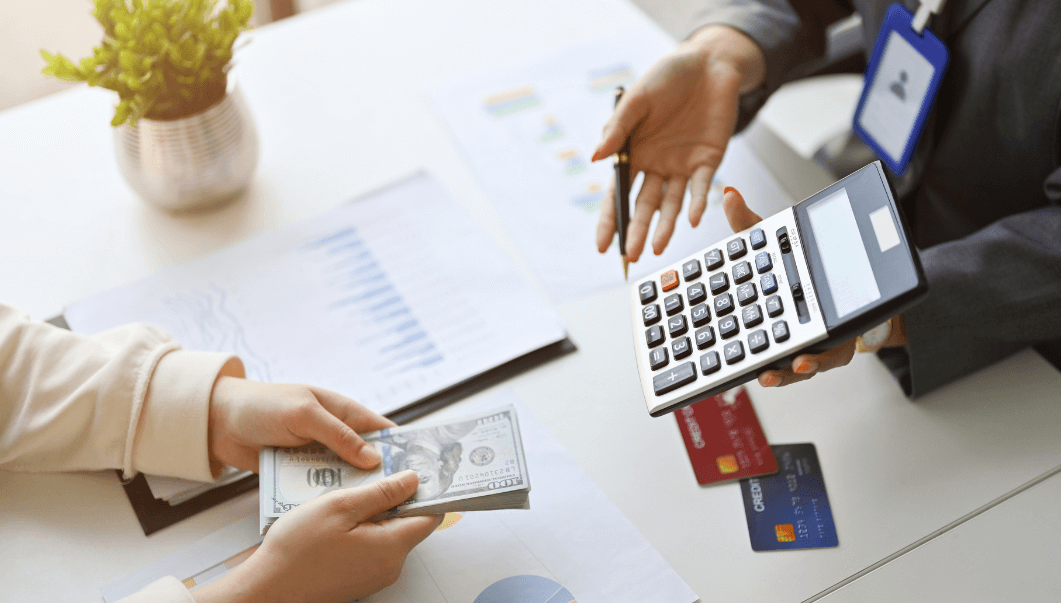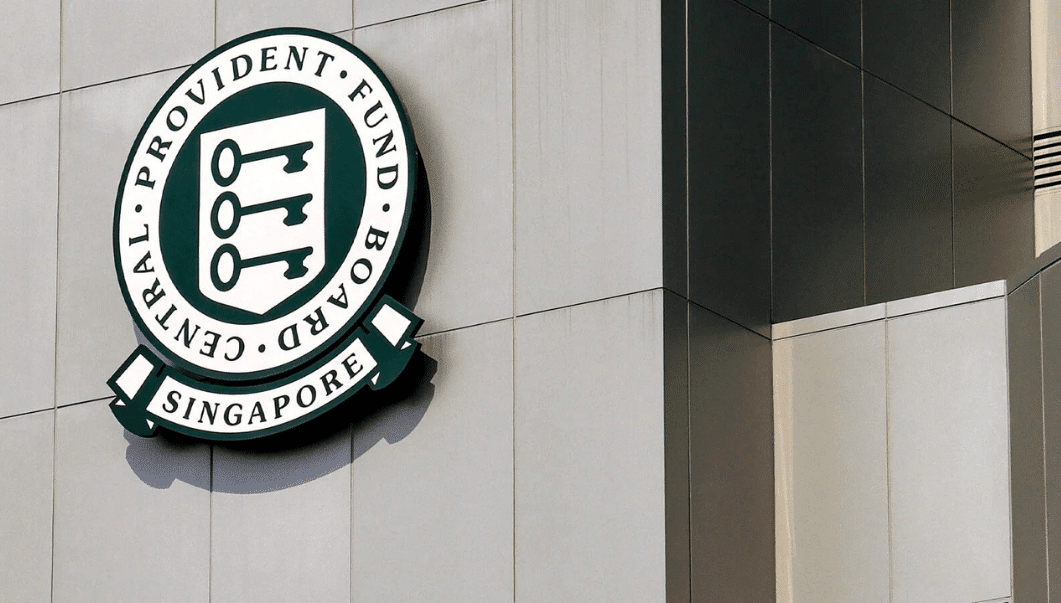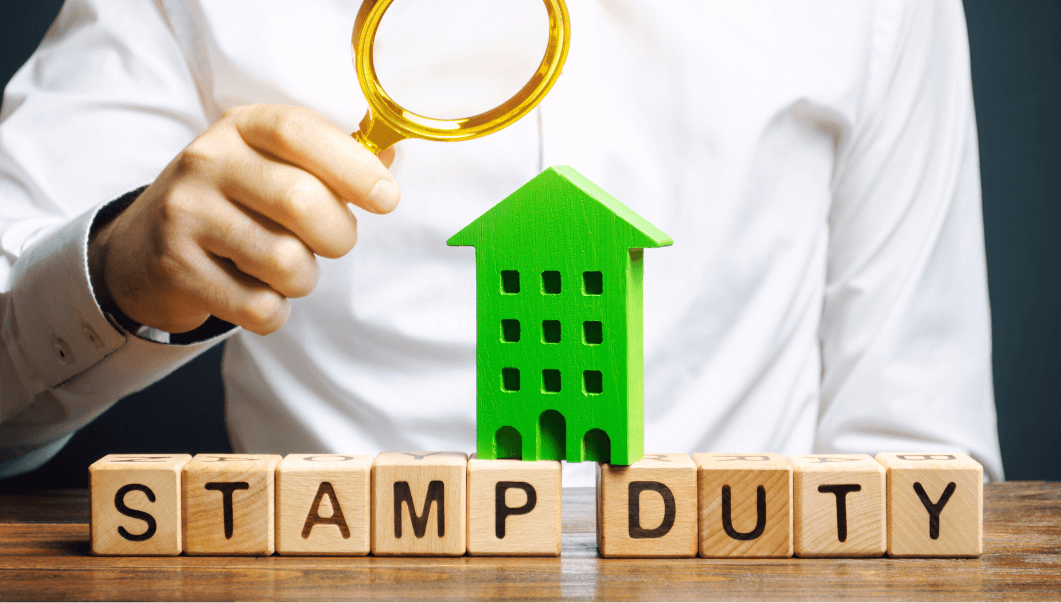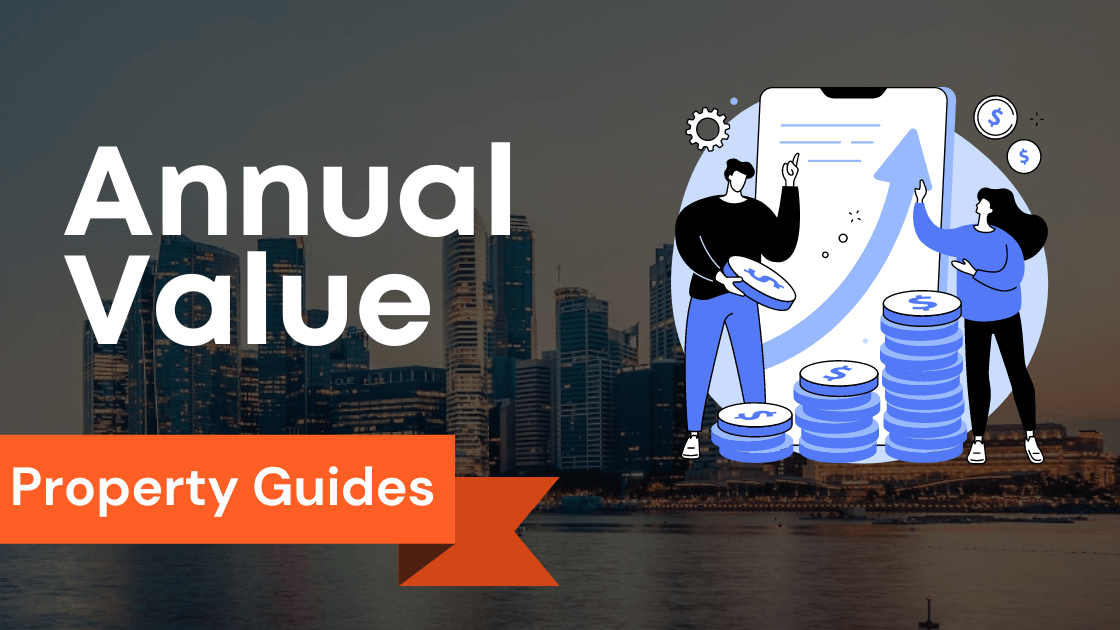
In Singapore, when it comes to property transactions, buyers need to be aware of various taxes, including Buyer Stamp Duty (BSD).
Understanding BSD is crucial to avoid any surprises during the property purchasing process.
What is Buyer Stamp Duty (BSD)?
Buyer Stamp Duty (BSD) is a tax imposed on buyers during the purchase of property in Singapore.
It is calculated based on the purchase price or market value, whichever is higher.
The Singapore government imposes this duty to provide revenue for public spending and manage property demand.
Purpose and importance of BSD in Singapore
The purpose of BSD is twofold.
Firstly, it ensures that individuals purchasing residential properties contribute to the funds used for public services and infrastructure development.
This helps support the growing needs of the population.
Secondly, BSD is also a measure by the Singapore government to regulate the property market.
By adjusting the BSD rates, the government can influence property demand and prevent speculative behavior leading to property bubbles.
The importance of BSD lies in its role in ensuring a fair and sustainable property market.
Whether you are a Singaporean citizen, Permanent Resident, or foreigner, understanding the duty payable becomes essential when planning to purchase property.
Buyers can use the Inland Revenue Authority of Singapore’s (IRAS) stamp duty calculator to calculate the stamp duty payable accurately.
https://www.youtube.com/watch?v=qBzm6Ix2N8o
This tool allows buyers to determine the amount they must pay based on the property’s purchase price.
It’s worth noting that certain types of properties, such as HDB flats, have different BSD rates, and additional Buyer Stamp Duty (ABSD) may apply to foreign buyers and entities.
Understanding these regulations and duties is crucial to budgeting and avoiding surprises during purchasing.
By familiarizing themselves with Buyer Stamp Duty (BSD) and other related taxes, buyers can make informed decisions and ensure a smooth property buying experience in Singapore.
Key Takeaways
- What is BSD?: Buyer Stamp Duty (BSD) is a tax imposed on property buyers in Singapore based on the purchase price or market value, whichever is higher.
- Purpose of BSD: BSD serves a dual purpose: it contributes to public revenue and helps regulate the property market to prevent speculative behavior and property bubbles.
- Calculation of BSD: To calculate BSD, multiply the applicable rate (1% to 4%) by the property’s purchase price and round down to the nearest dollar.
- Types of Properties: BSD applies to various property types, including residential, commercial, and industrial properties. Specific rates and exemptions vary.
- Using IRAS Calculator: The Inland Revenue Authority of Singapore (IRAS) provides an online Stamp Duty calculator to accurately determine BSD based on the property’s price.
- Additional Buyer Stamp Duty (ABSD): ABSD is an additional tax imposed on certain property transactions to cool the market and ensure fair access for citizens and PRs.
- ABSD Rates: ABSD rates vary based on the buyer’s citizenship and the number of properties they own, with foreigners subject to higher rates.
- Using CPF for BSD: CPF funds can be used to pay BSD but not ABSD. There are conditions, including a withdrawal limit, for using CPF for this purpose.
- Seller Stamp Duty (SSD): SSD is imposed on properties sold within a specific holding period to discourage property flipping and stabilize the market.
- Stamp Duty Remission and Exemptions: There are remission schemes for BSD and ABSD, such as those for HDB flats and residential properties, subject to conditions. Holding periods and lock-in periods apply, and stamp duty may still be payable if conditions aren’t met.
Understanding Buyer Stamp Duty (BSD) in Singapore
Definition and Scope of BSD
Buyer Stamp Duty (BSD) is a tax imposed on buyers when they acquire a property in Singapore.
It is payable on the purchase price or the market value, whichever is higher.
BSD applies to residential and non-residential properties, including commercial, vacant, and industrial properties.
The stamp duty rates for BSD vary depending on the property’s purchase price.
The rate ranges from 1% to 4%, with higher rates applying to higher-priced properties.
The duty payable can be calculated using a stamp duty calculator provided by the Inland Revenue Authority of Singapore (IRAS).
Applicability of BSD to Different Types of Properties
BSD applies to various properties, including residential, commercial, and industrial.
BSD is typically payable by Singapore citizens, permanent residents, and foreigners for residential properties.
However, specific residential properties are exempted from BSD, such as HDB flats with an annual value of $13,000 or below and residential properties acquired under particular schemes.
Commercial and industrial properties are also subject to BSD, but the rates and exemptions may differ from residential properties.
Property buyers need to understand the specific stamp duty rates and immunities that apply to the type of property they are purchasing.
Property agents can provide valuable guidance in navigating the complexities of stamp duty obligations.
Understanding BSD is crucial for property buyers in Singapore.
Calculating and budgeting for the stamp duty payable is essential to the overall cost of purchasing a property.
Buyers should consult the IRAS website or seek professional advice to determine the exact BSD amount they must pay based on the specific property transaction.
Overall, being informed about BSD and its applicability to different types of properties will enable buyers to make well-informed decisions in the Singapore property market.
Calculation of Buyer Stamp Duty (BSD) in Singapore

Step-by-step guide to calculating BSD
When purchasing residential properties in Singapore, buyers are required to pay Buyer Stamp Duty (BSD).
The amount of BSD to be paid is determined based on the property’s purchase price.
Here’s a step-by-step guide to help you calculate BSD:
- Determine the purchase price: The first step is determining the purchase price of the property you intend to buy. This includes the price stated in the Sale and Purchase Agreement and any other payments made or to be made in connection with the purchase.
- Determine the applicable BSD rates: The BSD rates depend on the purchase price and the buyer’s residential status. The rates range from 1% to 4% of the purchase price.
- Calculate the BSD payable: Multiply the applicable BSD rate by the purchase price to calculate the BSD payable. The result should be rounded down to the nearest dollar.
For example, if the purchase price is SGD 1,000,000 and the applicable rate is 3%, the BSD payable would be SGD 30,000.
Using the IRAS online Stamp Duty calculator
The Inland Revenue Authority of Singapore (IRAS) provides an online Stamp Duty calculator to make it easier for potential buyers to calculate BSD accurately.
This calculator considers the applicable rates and provides an accurate BSD calculation based on the purchase price.
The IRAS online Stamp Duty calculator is user-friendly and can be accessed on the IRAS website.
Input the purchase price; the calculator will provide the exact BSD payable amount.
Potential buyers can use the online calculator to estimate the BSD payable and avoid any miscalculations accurately.
In conclusion, potential buyers in Singapore need to understand how to calculate Buyer Stamp Duty accurately.
By following the steps outlined above or using the IRAS online Stamp Duty Calculator, buyers can determine the BSD amount they need to pay for their residential property purchase.
Additional Buyer Stamp Duty (ABSD) in Singapore

Definition and purpose of ABSD
The Additional Buyer Stamp Duty (ABSD) is a tax imposed by the Singapore government on certain property transactions.
Its purpose is to cool down the property market and ensure that Singapore citizens and permanent residents have a fair chance at purchasing residential properties there.
The ABSD applies to Singapore citizens and foreigners buying residential properties in Singapore.
https://www.youtube.com/watch?v=A6akKvS9m6s
The rate of the ABSD varies depending on the buyer’s citizenship and the number of properties they already own.
For example, Singapore citizens buying their first residential property are exempt from the ABSD, while Singapore permanent residents are subject to a 5% ABSD rate.
On the other hand, foreigners have to pay a higher ABSD rate.
Who needs to pay ABSD?
The ABSD applies to individuals purchasing residential properties in Singapore.
This includes both private properties and HDB flats.
Buyers who are Singapore citizens and Singapore permanent residents are required to pay the ABSD.
The ABSD is calculated based on the property’s purchase price or market value, whichever is higher.
It is payable within 14 days of signing the agreement to purchase the property.
It’s important to note that the ABSD is, in addition to the Buyer’s Stamp Duty (BSD), a separate tax on property transactions in Singapore.
The BSD is payable by all property buyers, regardless of their citizenship or residency status.
You can use the Stamp Duty Calculator provided by the Inland Revenue Authority of Singapore (IRAS) to calculate the ABSD payable.
The calculator considers the buyer’s citizenship, residency status, number of properties owned, and other relevant factors.
Specific individuals may sometimes be eligible for ABSD remission or refund.
This typically applies to buyers who sell their existing property within a specified period or meet certain conditions the Singapore government sets.
By understanding the ABSD and the factors determining the duty payable, buyers can better plan their finances and be prepared for the additional costs of purchasing residential properties in Singapore.
CPF and Buyer Stamp Duty

Using CPF funds to pay for BSD (current rate, increase in property tax, CPF, pay for stamp duty, CPF board)
In Singapore, buyers are required to pay a Buyer Stamp Duty (BSD) when they purchase residential properties.
The BSD rates depend on the property’s purchase price or market value, whichever is higher.
The current BSD rates range from 1% to 4% for residential properties.
Can CPF funds be used to pay for BSD?
Yes, buyers can use their CPF funds to pay for BSD.
However, certain conditions and limitations apply.
CPF Board: The Central Provident Fund (CPF) Board allows buyers to use their CPF Ordinary Account (OA) to pay for BSD.
The buyer must be the individual beneficiary of the property, and the property must be residential.
Conditions and limitations: There are several conditions and restrictions that buyers need to be aware of when using CPF funds to pay for BSD.
- Transitional provision: For properties purchased before 10 March 2007, the CPF Board allows using CPF funds to pay for the BSD.
- Subsequent property purchases: If the buyer already owns a property and is purchasing a second property, the CPF funds can only be used to pay for the BSD if the property is an HDB flat or if the buyer meets specific criteria for using CPF funds for higher-end properties.
- CPF withdrawal limit: CPF funds for BSD are subject to the CPF withdrawal limit. The buyer must have sufficient CPF funds in their OA to cover the BSD payable.
- CPF refund: If the buyer later sells the property, the CPF funds used to pay for the BSD will be refunded to their CPF OA.
It is essential for buyers to carefully consider their financial situation and CPF funds before deciding to use them to pay for BSD.
They can consult the CPF Board or use the CPF website’s Stamp Duty Calculator to estimate the amount of BSD payable and the available CPF funds.
Here’s a table summarizing the conditions and limitations for using CPF funds to pay for BSD:
Condition/Limitation Explanation
Buyers can use CPF funds to pay for BSD for properties purchased before 10 March 2007.
Subsequent property purchases CPF funds can be used for BSD if the buyer already owns a property and is purchasing a second property that is an HDB flat or if the buyer meets specific criteria for higher-end properties.
CPF withdrawal limit The use of CPF funds for BSD is subject to the CPF withdrawal limit.
The buyer must have sufficient CPF funds in their OA to cover the BSD payable.
CPF refund upon property sale If the buyer sells the property, the CPF funds used to pay for BSD will be refunded to their CPF OA.
Seller Stamp Duty (SSD)

Overview of Seller Stamp Duty (SSD) in Singapore
Seller Stamp Duty (SSD) is a tax imposed on properties sold within a specified holding period in Singapore.
The purpose of SSD is to discourage property flipping and stabilize the real estate market.
Buyers and sellers need to understand the conditions and rates associated with SSDs.
The SSD rates are determined based on the duration that a property is held before being sold.
For example, if a property is sold within a year of purchase, the SSD rate can range from 12% to 16% of the sale price.
The rates decrease progressively for holding periods of one to three years and are waived for properties sold after three years.
It’s worth noting that SSD only applies to certain types of properties.
Residential properties, such as apartments, condominiums, and landed houses, are subject to SSD.
However, properties that fall within the Housing Development Board (HDB) regulations, such as HDB flats, are exempt from SSD.
Singapore Permanent Residents (SPRs) must also pay SSD when selling their properties within the holding period.
However, the rates for SPRs are generally lower than those for foreigners.
Understanding the conditions and rates for Seller Stamp Duty
Some property owners may transfer the property to a family member or another party to avoid paying SSD.
However, the Inland Revenue Authority of Singapore (IRAS) has implemented measures to prevent the circumvention of SSD.
Under the SSD rules, the government considers beneficial owners when determining the applicable SSD rates.
The SSD rates will be raised if a property has changed helpful owners within the holding period.
Property owners need to understand that the Commissioner of Stamp Duties has discretionary powers to raise the SSD rates in cases where there is evidence of abuse or tax avoidance.
This serves as a deterrent for individuals attempting to evade SSD obligations.
Before making any property transactions, consulting with a real estate professional or seeking advice from the IRAS to ensure compliance with SSD regulations is recommended.
Overall, understanding the conditions and rates for Seller Stamp Duty is crucial for buyers and sellers in Singapore.
By familiarizing themselves with these regulations, individuals can make informed decisions and avoid any potential penalties associated with non-compliance.
Stamp Duty Remission and Exemptions

In Singapore, stamp duty is a tax payable on specific documents or transactions, including property purchases.
As a buyer, it is essential to understand the various stamp duty remission and exemption schemes available.
Available remission schemes for Buyer Stamp Duty (BSD) and Additional Buyer Stamp Duty (ABSD)
- Remission for HDB Flats: First-time buyers of Housing and Development Board (HDB) flats may be eligible for remission of BSD. The remission is based on certain conditions, such as the buyer’s citizenship, income ceiling, and ownership of other properties.
- Remission for Residential Properties: Buyers of residential properties, such as private properties or Executive Condominiums, may be eligible for remission of ABSD. The remission is subject to conditions, including the buyer’s citizenship, owner-occupation intent, and ownership of other properties.
- Instrument Remission: Certain instruments are eligible for BSD remission, such as transferring assets between related companies, trustees, and beneficiaries.
- ABSD Remission for specific groups: Certain groups, such as Singapore Permanent Residents (SPR) with an SPR spouse, may be eligible for ABSD remission or a reduced ABSD rate.
Conditions and criteria for stamp duty exemptions in Singapore
- Holding Period: For residential properties, the buyer must fulfill a minimum holding period of 3 years to qualify for BSD remission or exemption.
- Lock-in Period: To enjoy BSD remission or exemption, the buyer must not dispose of the property within a specified lock-in period.
- Stamp Duty is Payable: Even with remission or exemption, stamp duty is still payable if the conditions are not met, or the property is sold within the holding period.
- ABSD Rate will Apply: If the buyer does not qualify for any remission or exemption, the prevailing ABSD rate will apply.
It is essential for buyers to carefully consider the stamp duty remission and exemption schemes available when purchasing a property in Singapore.
Consulting with a qualified professional or using the IRAS (Inland Revenue Authority of Singapore) stamp duty calculator can help determine the duty payable and eligibility for remission or exemption.
Paying for Buyer Stamp Duty (BSD) and ABSD

As a home buyer in Singapore, understanding the intricacies of Buyer Stamp Duty (BSD) and Additional Buyer Stamp Duty (ABSD) is crucial.
These are taxes imposed on residential properties purchased in Singapore.
Let’s delve into the different payment methods for BSD and ABSD and how CPF funds can be used.
Methods of payment for Buyer Stamp Duty and Additional Buyer Stamp Duty
When it comes to paying for BSD and ABSD, there are several options available:
- Cash: Home buyers can pay the stamp duty in cash. The duty payable is calculated based on the property’s purchase price or market value, whichever is higher. It is recommended to set aside funds specifically for this purpose.
- CPF Funds: Buyers can also utilize their Central Provident Fund (CPF) savings to pay for the stamp duty. However, it is essential to note that CPF funds cannot be used to pay for ABSD. The CPF Board will issue a separate letter informing buyers of the amount that can be withdrawn for BSD.
Using CPF funds to pay for stamp duty in Singapore
When using CPF funds to pay for stamp duty, there are a few considerations to keep in mind:
- For en-bloc or collective sale cases, buyers can request the CPF Board to release the relevant CPF funds to the solicitor handling the transaction. The solicitor will ensure that the duty payable is paid promptly.
- The CPF Board will also issue a letter to inform the buyer of the amount available for withdrawal to pay for document taxes, including stamp duty.
- Buyers must maintain adequate funds in their CPF accounts to cover the purchase and stamp duty costs, as insufficient funds may result in delays or complications in the transaction.
In conclusion, understanding the different payment methods for Buyer Stamp Duty (BSD) and Additional Buyer Stamp Duty (ABSD) is crucial for home buyers in Singapore.
Whether paying in cash or utilizing CPF funds, knowing the options available ensures a smoother property-purchase process.
Conclusion
Property stamp duty in Singapore
In conclusion, the buyer stamp duty in Singapore is essential for individuals looking to purchase immovable properties.
The Stamp Duties Act governs the imposition of stamp duty on property transactions, and buyers must understand the applicable rates and regulations.
Additional Buyer’s Stamp Duty (ABSD)
One key aspect to be aware of is the Additional Buyer’s Stamp Duty (ABSD).
The ABSD is an additional stamp duty imposed on specific buyers who purchase residential properties.
The applicable ABSD rate depends on various factors, such as whether the buyer owns any other residential properties and the number of properties they buy.
The rates for ABSD were last revised on 14 February 2023 by Finance Minister Lawrence Wong, and the new rates came into effect on 15 February 2023.
Revised ABSD rates
Under the revised ABSD rates, individuals buying their second residential property will face higher ABSD rates, which will increase further for subsequent properties.
Buyers must factor in the stamp duty they incur when planning their property purchase.
Seller’s Stamp Duty
In addition to the buyer’s stamp duty, sellers of residential properties may also be subject to the Seller’s Stamp Duty (SSD).
The SSD applies to properties that are sold within a specific holding period.
Sellers are advised to understand the SSD rates and comply with the regulations to avoid penalties.
Payment of stamp duty
Buyers must pay the stamp duty within 14 days of signing the agreement in Singapore.
The amount of stamp duty payable is based on the consideration for stamp duty purposes, which includes the purchase price or market value of the property, whichever is higher.
Commissioner of Stamp Duties’ discretion
It is important to note that the Commissioner of Stamp Duties may sometimes exercise discretion.
For example, suppose a property is acquired due to a transfer of shares.
In that case, the Commissioner may deem the transaction a share transfer rather than a property purchase, resulting in a lower or no stamp duty liability.
In summary, understanding the buyer stamp duty and other associated stamp duties in Singapore is crucial for anyone purchasing a residential property.
Knowing the applicable rates, regulations, and payment timelines will ensure a smooth and compliant property transaction process.
Buyers and sellers should seek professional advice to navigate the stamp duty landscape and make informed decisions.
Frequently Asked Questions
What is Buyer Stamp Duty?
Buyer Stamp Duty (BSD) is a tax imposed on buyers when they purchase a property in Singapore.
It is payable to the Inland Revenue Authority of Singapore (IRAS).
How is the Buyer Stamp Duty calculated?
The Buyer Stamp Duty is calculated based on the property’s purchase price or market value, whichever is higher.
The stamp duty rates vary depending on the property type and whether the buyer is a Singapore resident or a foreigner.
Do I need to pay the Additional Buyer Stamp Duty (ABSD)?
The Additional Buyer Stamp Duty (ABSD) is an additional tax imposed on specific categories of buyers.
Singapore citizens buying their first residential property are generally exempted from ABSD.
However, foreigners and Singaporeans buying a second or subsequent property must pay the ABSD.
How do I calculate the Additional Buyer Stamp Duty payable?
The ABSD payable is calculated based on the property’s purchase price or market value, whichever is higher.
The ABSD rates for residential properties range from 12% to 25%, depending on the buyer’s residency status and the number of residential properties owned.
What is the stamp duty rate for residential properties?
The stamp duty rate for residential properties in Singapore varies depending on the property’s purchase price or market value.
The rates range from 1% to 4%, with higher rates for more expensive properties. HDB shop with living quarters.
When do I need to pay the ABSD?
The ABSD must be paid within 14 days from the property purchase or acquisition date.
Failure to pay the ABSD on time may result in penalties or interest charges.
Can I use the Additional Buyer Stamp Duty calculator to determine the amount of ABSD payable?
Yes, you can use the ABSD calculator provided by IRAS to estimate the amount of ABSD payable.
The calculator considers the buyer’s residency status and the number of residential properties owned.
Are HDB flats subject to stamp duty?
Yes, HDB flats are subject to stamp duty.
The stamp duty rates for HDB flats differ from those for private residential properties.
The rates for HDB flats range from 1% to 3%, depending on the flat’s purchase price or market value.
What is ABSD remission?
ABSR remission refers to the remission of the Additional Buyer Stamp Duty (ABSD) for specific categories of buyers.
For example, Singaporeans who buy a second residential property and sell their first property within six months may be eligible for remission of the ABSD paid on the second property.
What are the types of stamp duties in Singapore?
The types of stamp duties in Singapore include Buyer Stamp Duty (BSD), Additional Buyer Stamp Duty (ABSD), Seller Stamp Duty (SSD), and Property Tax Stamp Duty.
Each type of stamp duty is imposed on different transactions and has its own set of rules and rates.












